Top 10 Butterfly Host Plants to Grow in Texas
If you love butterflies and moths and are concerned about their population declines, then this is the post for you! I’ve listed out 10 great butterfly host plants to grow. Latest studies show that Western butterfly population are decreasing on average 1.6% each year, with the beloved Western Monarch experiencing a 99.9% population decline since the 1980s.
But not all hope is lost! We each have the power to help reverse this trend from our own yards. It all comes down to the plants we choose to grow. We need more butterfly host plants!
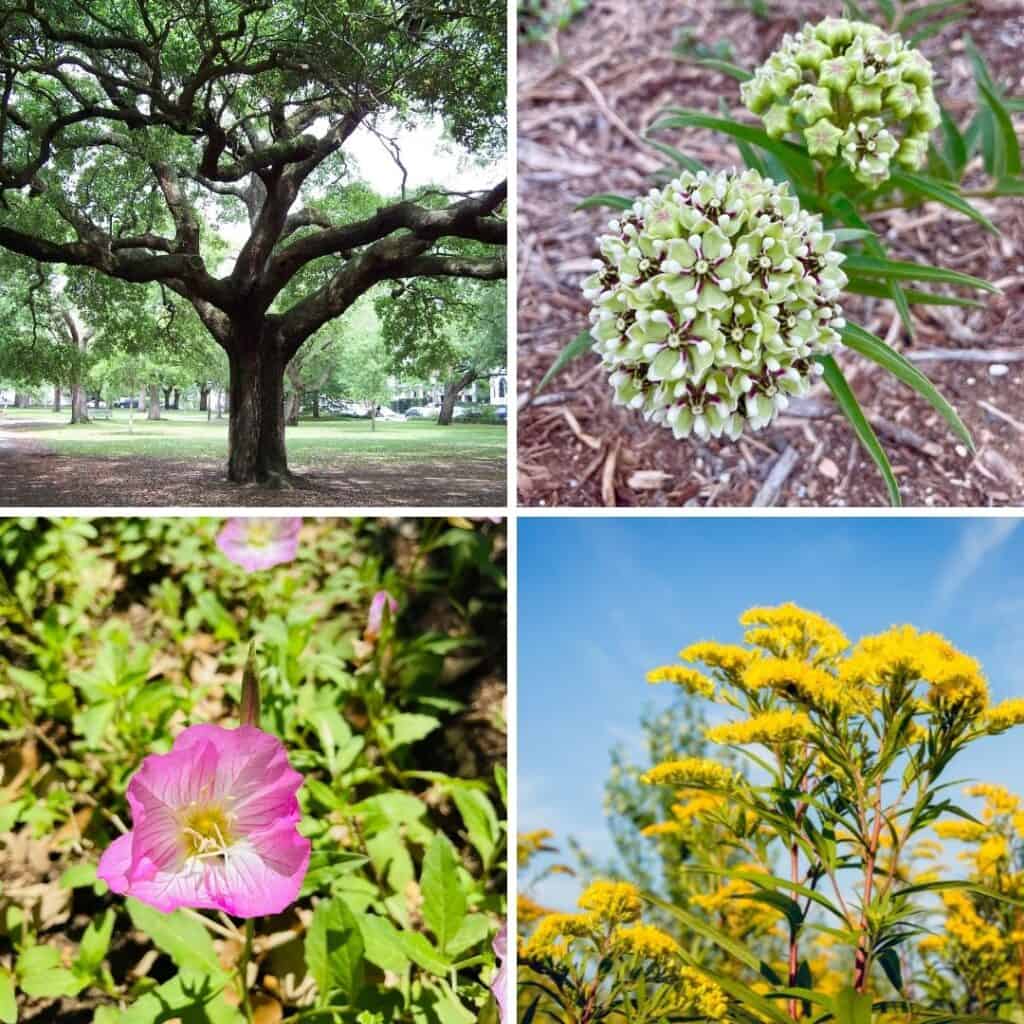
What is a Host Plant?
A host plant is a plant that butterflies and moths lay their eggs on. They lay their eggs on specific plants that they know their caterpillars will be able to eat. Butterfly host plants can also be called larval host plants or caterpillar host plants.
Most of the time these are native plants that the butterflies and moths have evolved alongside. Monarchs and milkweed are the classic example of the butterfly and host plant relationship.
However, many of the over 500 species of butterflies in the US rely on a small group of related plant species to lay their eggs. For instance, Pipevine Swallowtails only lay their eggs on pipevines, Gulf Fritillaries only lay their eggs on passionflower.
What is a Nectar Plant?
Nectar plants and host plants aren’t necessarily the same thing. While both are important butterfly plants, nectar plants provide food for adult butterflies and moths. They come to these flowering plants to drink the nectar.
However host plants provide food for the butterfly caterpillars. That food is typically in the form of a leaf! A single plant can serve as both a host plant and a nectar plant.
What are Good Butterfly Plants?
If you want to get the biggest bang for your buck when it comes to adding host plants to your yard, plant a native tree! Trees are some of the best host plants, and some species like Oaks serve as host plants for hundreds of species. If you want to attract a particular type of butterfly to your yard, make sure you have some of its host plants growing!
Favorite Butterflies and their Host Plants
Here are some popular butterflies and the host plants you’ll need to attract them. Use plants that are native to your area when possible:
- Monarch – Milkweed
- Gulf Fritillary – Passionvines
- Painted Lady – Thistles and Mallows
- Giant Swallowtail – Hop Tree, Toothache Tree, Citrus Trees
- Pipevine Swallowtail – Pipevine
- Eastern Swallowtail – Dill, Parsley, Fennel, Rue, Queen Anne’s Lace
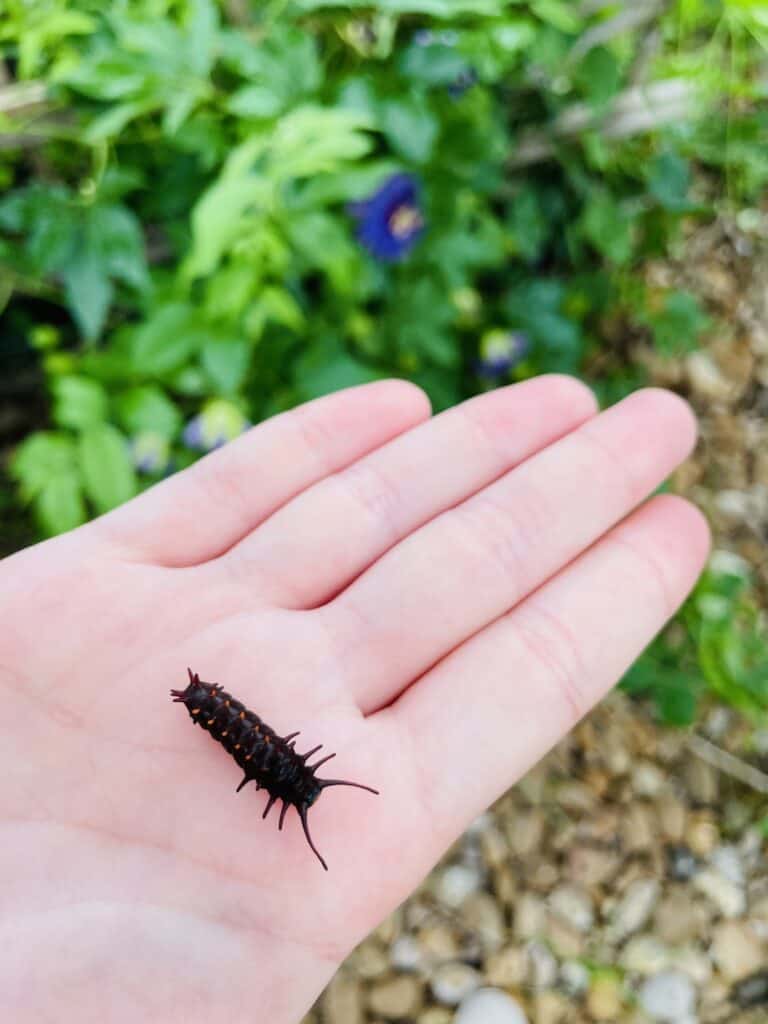
This post contains affiliate links. See our full disclosure.
Top 10 Butterfly Host Plants to Grow in Texas
Below are some of the best host plants you can plant in Texas (and many parts of the US!). This is not a comprehensive list, but a curated list of plants you are most likely to find at a nursery, and you’d be most likely to grow in your yard!
Next to each species is the number of different moths and butterflies it supports as a host plant. These numbers are from the National Wildlife Foundation Native Plant Finder, which is based off of Doug Tallamy’s research. Information about each plant is from the book Native Texas Plants by Sally Wasowski.
Best Texas Host Plants: Trees and Shrubs
1. Oak (Quercus) – 468
Of all the host plants you can add to your yard, Oaks reign supreme! They serve as host plants for hundreds of different butterflies and moths. There are 44 species of Oaks that are native to Texas, so find one that is native to your ecoregion.
Here in San Antonio, we are lucky to have the beautiful Live Oaks (Quercus fusiformis). We have six of them growing in our yard, serving as the foundation for our Certified Wildlife Habitat!
2. Plum or Cherry (Prunus) – 270
The Mexican Plum (Prunus mexicana) is one of my favorite native flowering trees of Texas. Not only does it look beautiful in bloom in the spring, it is a great butterfly host plant to add to your yard.
Also consider these Plums and Cherries, depending on your Texas ecoregion:
- Flatwoods Plum (Prunus umbellata) – East Texas
- Oklahoma Plum (Prunus garcilis) – North Texas
- Creek Plum (Prunus rivularis) – Central Texas
- Cherry Laurel (Prunus caroliniana) – East Texas
- Escarpment Black Cherry (Prunus serotina var. eximia) – Hill Country
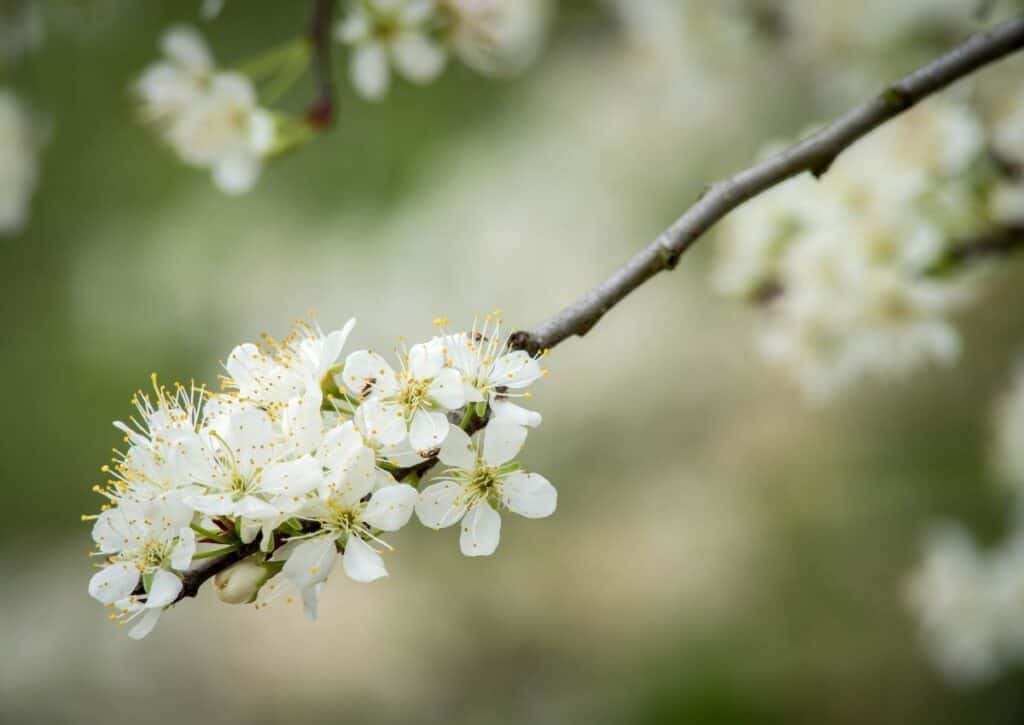
3. Willow (Salix) – 229
Try the Black Willow (Salix nigra) which can be found across the eastern two-thirds of Texas and across much of the US. This fast growing tree is a host plant for the Eastern Tiger Swallowtail, Viceroy, Mourning Cloak and Red-Spotted Admiral Butterflies. (Source).
4. Hickory or Pecan (Carya) -189
The Pecan (Carya illinoinensis) is the State Tree of Texas! This tall tree can be found along streams throughout the state. It is a great wildlife tree – the pecans feed small mammals and birds (and humans too!). It is host plant to the Gray Hairstreak Butterfly among others.
The Black Hickory (Carya texana) is a great host plant tree for East Texas. It is a host plant for gorgeous moths including the Luna, Funeral Dagger, and Giant Regal Moths. (Source)

Best Texas Butterfly Plants: Flowers and Grasses
5. Goldenrod (Solidago) -82
Goldenrods are one of the best herbaceous plants you can add to your yard as host plants. They support around 80 different butterflies and moths. Tall Goldenrod (Solidago altissima) is a great fall bloomer and beautiful addition to your wildflower bed.
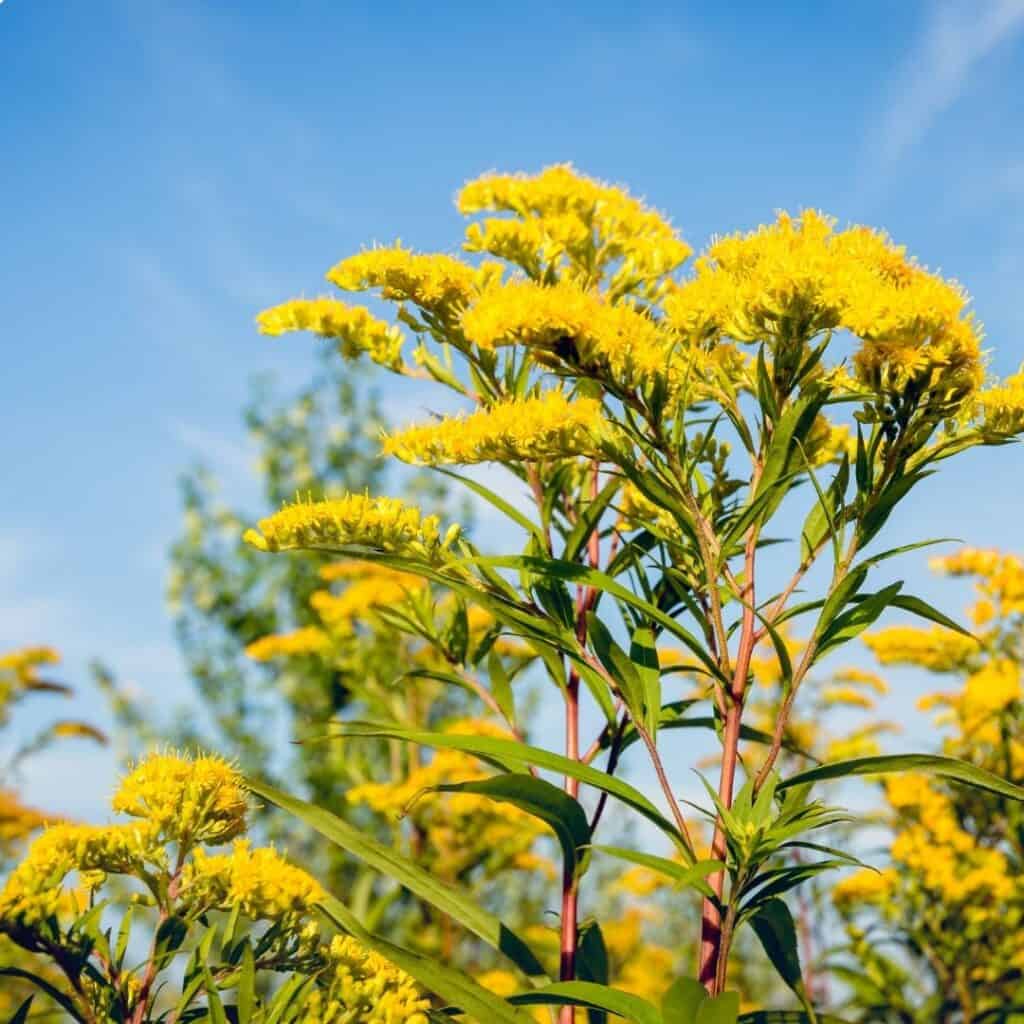
6. Sunflower (Helianthus) – 81
Sunflowers are another powerhouse host plant, in addition to providing seeds for wildlife. Try the Common Sunflower (Helianthus annuus) – plant some in your yard today!
7. Prickly Pear (Opuntia) – 27
The State Plant of Texas is also a great host plant! Pollinators also enjoy the nectar from its large yellow blooms.
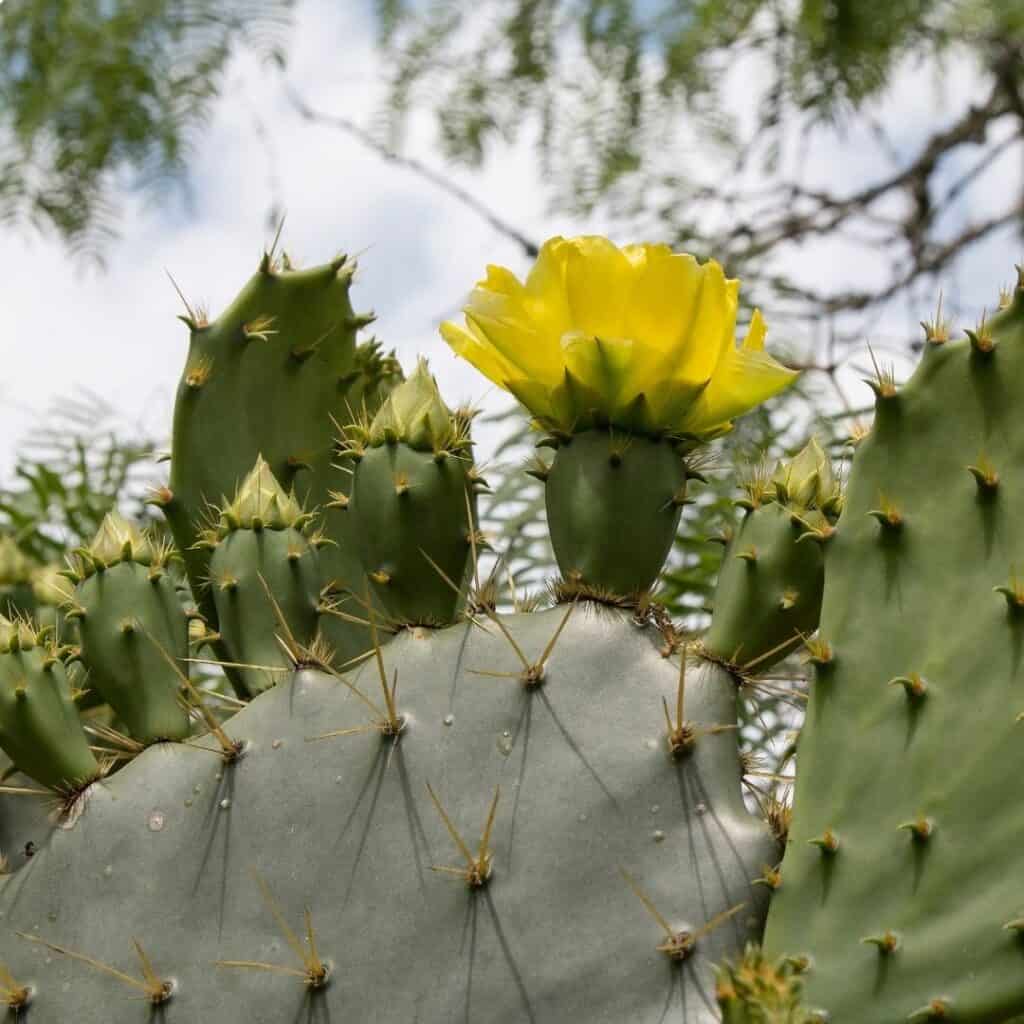
8. Big Bluestem (Andropogon) – 22
Native grasses make great butterfly host plants too. Big Bluestem (Andropogon gerardi) is a beautiful ornamental grass that does well throughout Texas. It is one of the Big Four prairie grasses. It is host plant to many different kinds of Skippers (a cross between a butterfly and a moth).
9. Evening Primrose (Oenothera) – 22
Pink Evening Primrose (Oenothera speciosa) is one of my favorite native wildflowers in my wildflower garden. This beautiful pink flower doubles as a nectar plant and host plant. The Oenothera species is host plant to 22 different butterflies and moths.
10. Milkweed (Asclepias) – 22
The most well-known host plant of them all! Did you know there are over 30 types of milkweed native to Texas? Not only are these crucial host plants for the monarch, but they support over 20 species of butterflies. My favorite milkweed native to the Texas Hill Country is Antelope Horns Milkweed.
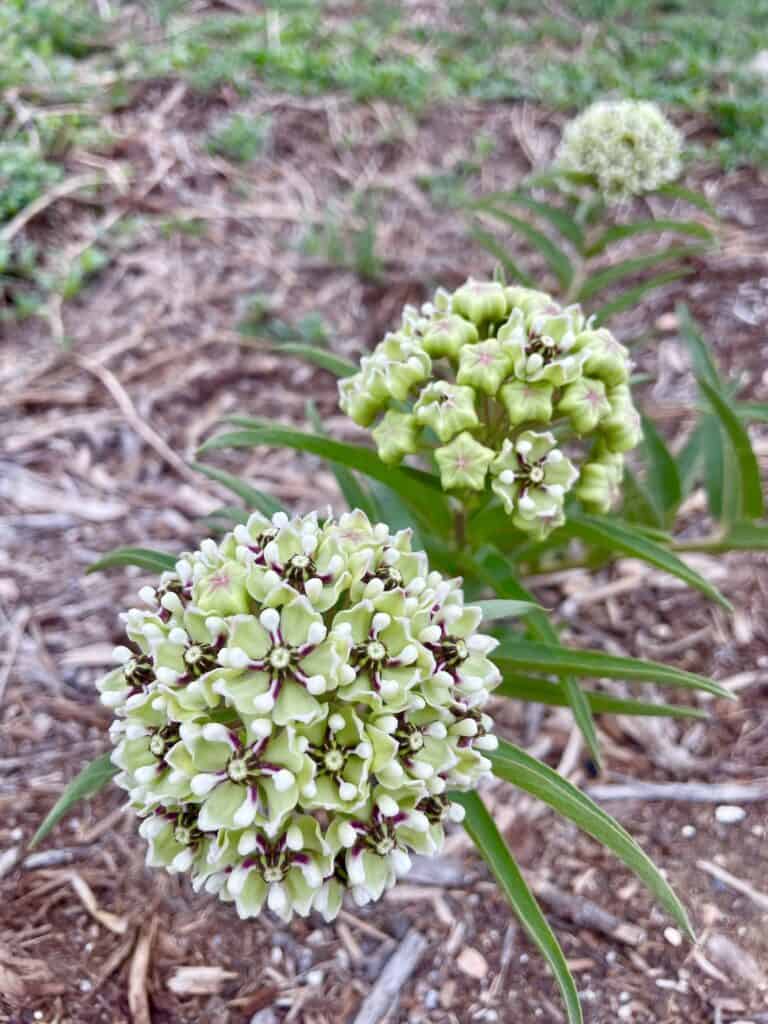
Pin this image to spread the word about host plants!
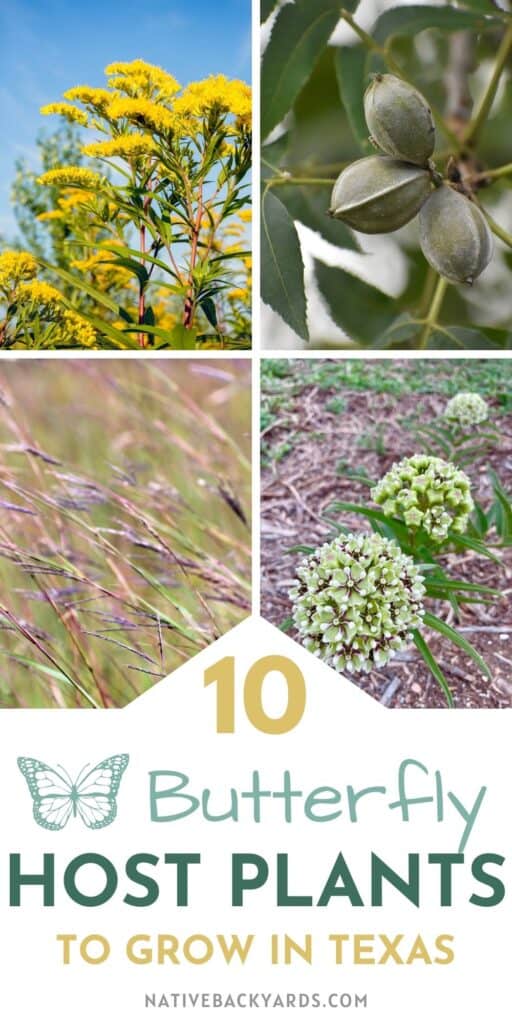
Growing butterfly host plants? Then you need this sign!
I designed this Pollinator Garden sign to help spread the word to others that you are growing plants that help support butterflies and their caterpillars.
You can find this sign along with a Native Plant Garden sign at the Native Backyards Etsy Shop. Includes free shipping!
PRINTABLE: Top 10 Texas Butterfly Host Plants
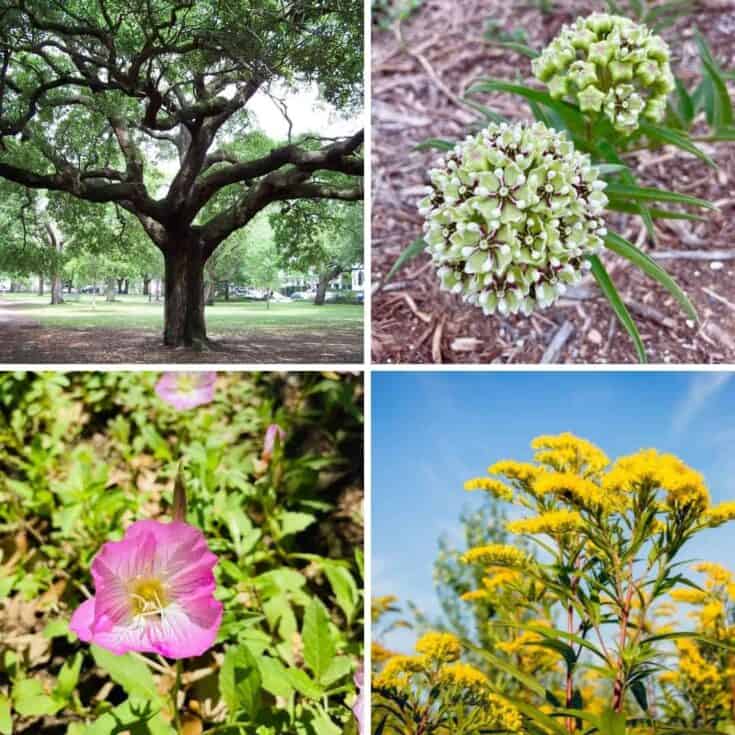
These 10 trees and perennial plants are some of the best butterfly and moth host plants you can add to your Texas yard.
Materials
Instructions
- Oak (Quercus) – 468
- Plum or Cherry (Prunus) – 270
- Willow (Salix) – 229
- Hickory or Pecan (Carya) -189
- Goldenrod (Solidago) -82
- Sunflower (Helianthus) – 81
- Prickly Pear (Opuntia) – 27
- Big Bluestem (Andropogon) – 22
- Evening Primrose (Oenothera) – 22
- Milkweed (Asclepias) – 22
Top Butterfly Host Plants to Grow in Texas
(in order of # of butterfly and moth species they support)
Notes
While these plants were chosen specifically for Texas, many of them are top host plants throughout the United States! Just be sure to choose a variety that is native to your area.
The number next to each plant indicates the number of different butterflies and moths that use it as a host plant. This data is from the National Wildlife Federation and Doug Tallamy's research.
Recommended Products
As an Amazon Associate and member of other affiliate programs, I earn from qualifying purchases.
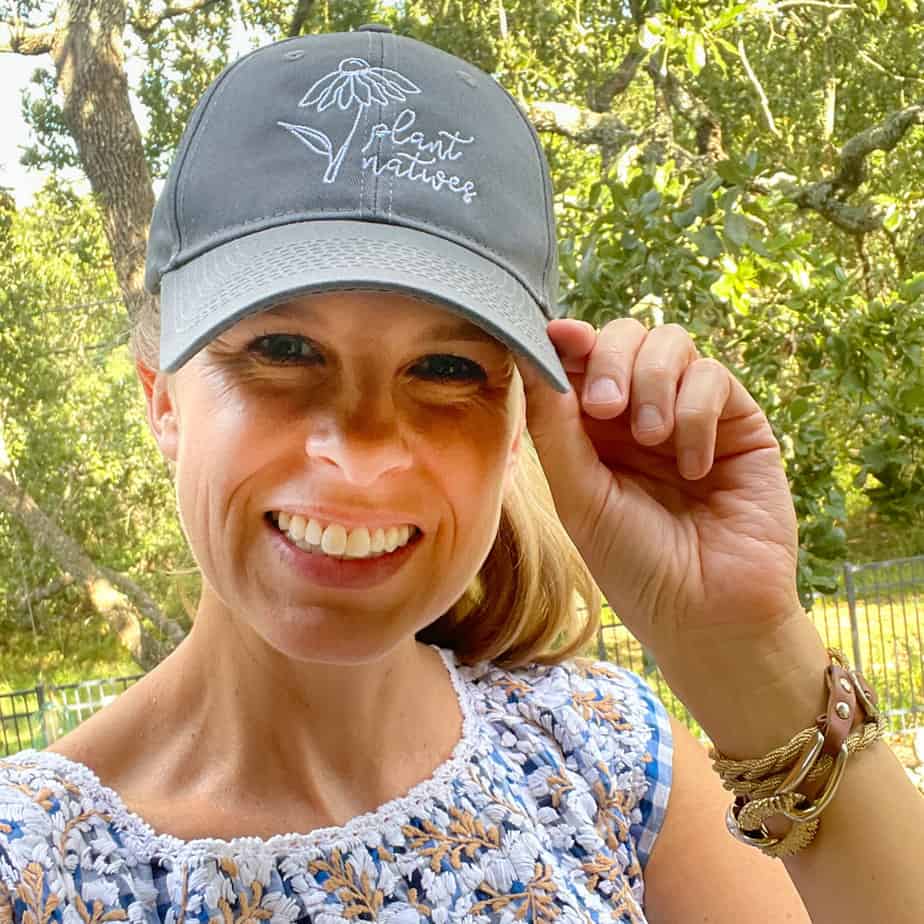
Welcome to Native Backyards! I’m Haeley from San Antonio, Texas, and I want to help you grow more native plants.
I have seen firsthand how the right plants can bring your yard to life with butterflies, bees, and birds. I’ve transformed my yard with Texas natives and I’m excited to share what I’ve learned with you.
Join my newsletter here! – each week I’ll send you helpful tips to make your native plant garden a reality!
Want to learn more about me and my garden? Check out my About page!
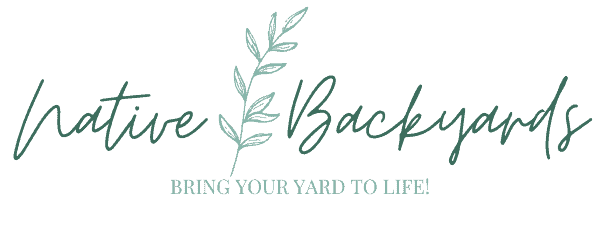
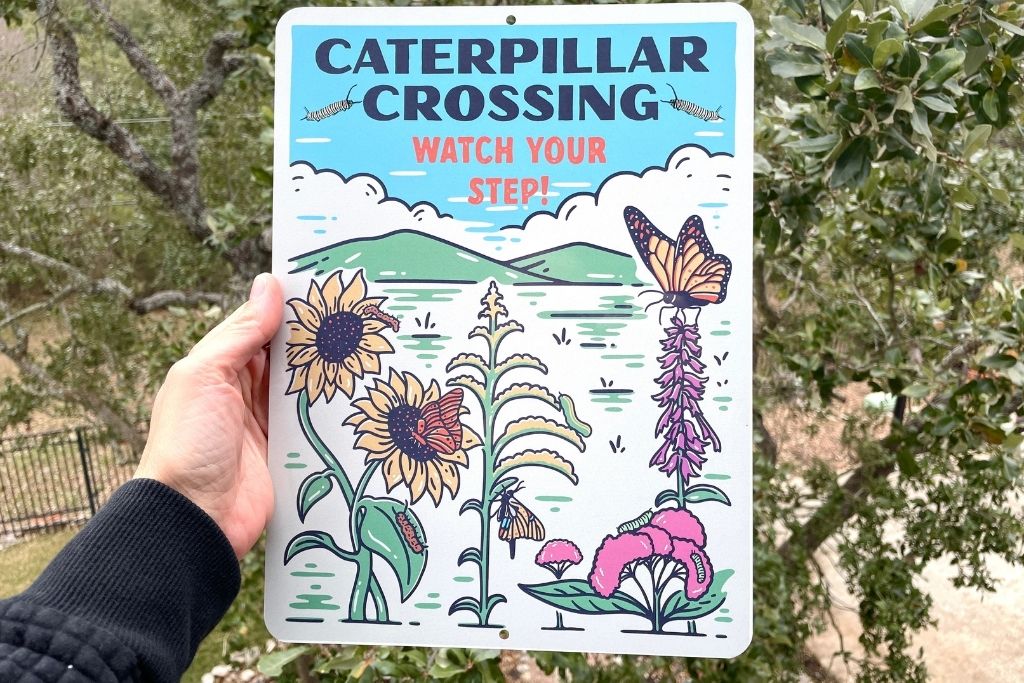



Thank you so much for this really helpful information. Can you say which ones would do well in shady and partly shady locations in Austin? What about planting in the same bed? I’m eager to plant and also a bit overwhelmed—how to begin.
Gratitude!
Hi Pamela, my apologies for the delayed response. I missed your comment in my inbox! So most of the plants in this list do best in full sun. For butterfly host plants that work in part shade try a native vine such as native Passionvine (host to Gulf Fritillary butterflies), native Pipevine (host to the beautiful Pipevine Swallowtail). Other great native butterfly plants for the shade that serve as host plants or nectar sources include Gregg’s Mistflower (one of my favorites to attract Queen and Monarch butterflies!), Boneset, Frostweed, Obedient Plant, Turk’s Cap and Inland Sea Oats. A mix of these would create a beautiful pollinator garden. Look for these plants at your local native plant nursery and you’ll be off to a great start at attracting butterflies and caterpillars to your shady yard!
My wife loves her Monarchs so much she tattooed some very very beautiful ones on her body. I didn’t pay much attention to what was happening to the butterflys myself until I started to listen to her knowledge of them and why they were special and what they meant to her. So now im on a mission to impress my wife and learn some great and new things about them so i can build something Beautiful with my new found knowledge. If any tricks or pictures anyone has of ther garden for thes Majestic creatures! Please send or post ect ect. Thank you.
Oh sorry folks..i guess it helps knowing where my special project(garden) I want to build for her to bring in butterflys of all sorts will be done in the central valley!
That is such an incredibly sweet thing to do for your wife, Beau! 💖 By Central Valley, are you referring to California? If so, here is a helpful article from the California Native Plant Society on Gardening for Butterflies: https://www.cnps.org/gardening/gardening-for-butterflies-3106.
This article also has some helpful photos of great plants in California to attract butterflies: https://www.laspilitas.com/easy/california-butterfly-garden.htm
Best of luck!
I live in Michigan. What perinnials would do well here? I love Monarchs & Painted Ladies.
Hi! Thanks so much for your comment. Check out this helpful article from the University of Michigan with suggestions for lots of perennials that attract butterflies in your area. https://news.umich.edu/gardening-to-attract-butterflies/
This PDF also lists Michigan butterflies along with their host plants – super helpful! http://nativeplant.com/MI_Butterflies.pdf
i am going to start a butterfly garden soon but one question is still on my mind once you have an established butterfly garden do the butterflies just start flying in
Hi Sam, thanks for your question. I’m so glad you’re going to be starting a butterfly garden! From my experience, it does not take long for the butterflies to find your plants. It is pretty amazing! Nectar plants in bloom will definitely attract them quickly. They will find their host plants too. I added a Passionvine this past summer and it was less than a foot tall. Within a month or so of planting it, there was already a Gulf Fritillary caterpillar on it (passionvine is its host plant). I bet you will be surprised. Let me know how it goes!
I would like more Butterfly information that would apply to central Texas more specifically Austin Texas.
David
Hi David, thanks for your comment. This book is my absolute favorite for more detailed information on Texas butterfly host plants. For each plant, the book provides a map of Texas and shows what part of Texas the plant is native to. I highly recommend it: https://www.tamupress.com/book/9781623496463/native-host-plants-for-texas-butterflies/
Haeley, Thank you for this informative article! Do you know if Texas butterflies are attracted to blue sage?
Hi Simona, thanks for your comment. While I am not familiar with Blue Sage, in general, butterflies will visit plants in the sage family. Here in Texas, Autumn Sage, Mealy Blue Sage, and Tropical Sage can all attract butterflies.